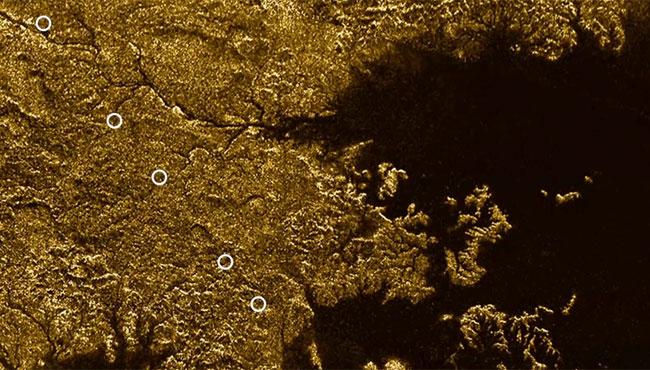Washington: In a significant find, NASA’s Cassini spacecraft has discovered deep, steep-sided canyons on Saturn’s largest moon Titan that are flooded with liquid methane.
The finding represents the first direct evidence of the presence of liquid-filled channels on Titan and could give scientists insights into its origins and similar geologic processes on the Earth.
The Cassini observations reveal that the channels — a network of them named Vid Flumina — are narrow canyons, generally a bit less than a km wide with slopes steeper than 40 degrees.
The canyons also are quite deep — those measured are 240-570 metres from top to bottom.
The presence of such deep cuts in the landscape indicates that whatever process created them was active for a long time or eroded down much faster than other areas on Titan’s surface.
The researchers’ proposed scenarios include uplift of the terrain and changes in sea level, or perhaps both.
“It’s likely that a combination of these forces contributed to the formation of the deep canyons, but at present it’s not clear to what degree each was involved,” said Valerio Poggiali from University of Rome and lead author of the study.
“What is clear is that any description of Titan’s geological evolution needs to be able to explain how the canyons got there,” he added in a paper appeared in the journal Geophysical Research Letters.
The branching channels appear dark in radar images, much like Titan’s methane-rich seas.
Earthly examples of both of these types of canyon-carving processes are found along the Colorado River in Arizona.
An example of uplift powering erosion is the Grand Canyon where the terrain’s rising altitude caused the river to cut deeply downward into the landscape over the course of several million years.
“Earth is warm and rocky, with rivers of water, while Titan is cold and icy, with rivers of methane. And yet it’s remarkable that we find such similar features on both worlds,” said Alex Hayes, a Cassini radar team associate at Cornell University in New York.
The researchers expect their continued work to produce a more comprehensive understanding of forces that have shaped the Saturnian moon’s landscape.
IANS

